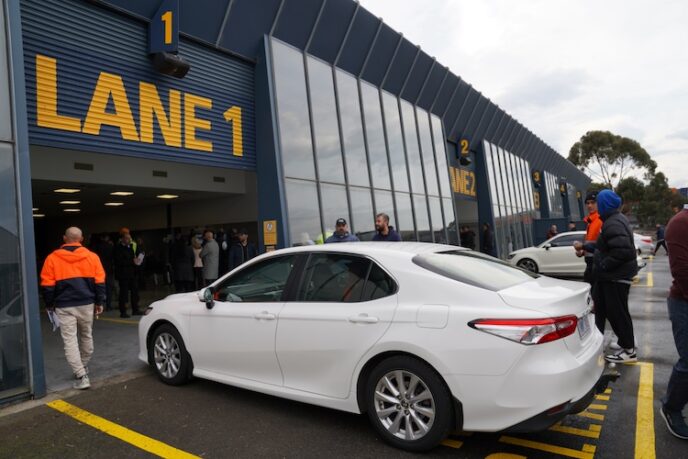
Ongoing high new-car sales have helped push dealer-used vehicle inventories to the highest level on record in Cox Automotive Australia’s (CAA) retail database.
Cox Automotive tracks the retailer-used market closely, covering a majority of second-hand cars, SUVs and light commercials listed in Australian dealers at any time.
Total inventory captured in CAA’s database increased 5.7% in July 2024 compared to the previous month and is a significant 9.4% greater in size today than it was at this point in 2023.
Increased supply in the dealer-used vehicle market naturally correlates with the record-setting new vehicle market performance in 2024, with the new and second-hand sectors inextricably linked – older cars are usually swapped out for new ones.
The increase in inventory shows that the new supply of second-hand cars is outpacing consumer demand despite positive growth there, too, with July 2024 sales of dealer-used cars up a more modest 0.8% over June 2024.
Nevertheless, dealer-used vehicle sales in July 2024 still hit their highest point in a month since November 2020, a period of almost four years. Year-to-date dealer-used sales are up 9.4%.
Robust used vehicle supply naturally compresses pricing and the Cox Automotive Australia used vehicle Price Index declined a further 0.5% in July over June, to 131.2.
A Price Index of 131.2 denotes an average per-vehicle price increase of 31.2% since December 2019, when the index began, adjusted by MSRP and volume-weighted.
The index is now at its lowest point since February 2021, meaning, on average, used cars today are effectively selling on average for about what they cost three-and-a-half years ago.
But as has become a familiar pattern, price patterns over time vary across the used car fleet depending on age and vehicle type: Older cars remain more inflated than younger ones relative to pre-COVID, and traditional passenger hatches and sedans are more inflated than SUVs.
For example, the CAA price index on 2–4-year-old hatchbacks and sedans is 131.9, whereas the index for the same sorts of vehicles aged 8-10 is 164.3. This doesn’t mean older cars are more expensive, but instead, it means they are more inflated relative to the end of 2019.
Traditional passenger vehicles are also more inflated than SUVs across the board, with respective average price indexes of 141.8 versus 123.4 – denoting an average 41.8% actual price increase versus 23.4%.
Why is this occurring? For one thing, older vehicles are inflated because cost-of-living challenges are driving up demand for older and more affordable vehicles, while SUVs of all ages depreciate more quickly than traditional passenger cars because there is more excellent supply.
This latter point is reflected in the average Market Days’ Supply of SUVs being 64 and the MDS for passenger cars being 62 days. To put this into more context, the inventory of used passenger cars is up 37% in the past two years, while the supply of used SUVs is up a more robust 50%.
Firm-performing used vehicle retailers sell their vehicles quickly, so it’s essential to price them right. CAA data, however, shows that 40.2% of used cars are discounted online before sale, by an average of 7.3%, the highest discounting rate since May 2020.
This means four-in-10 used vehicles sit on lots for longer than they need to because the initial asking price is out of step with the market, perhaps more reflective of the sort of premiums we saw in 2022.
Regarding the emerging used electric vehicle market, second-hand EV inventory is up 75% across the past 12 months and 202% over the past 24 months.
Top 5 selling dealer-used vehicles in July 2024:
• Ford Ranger: Up 23.3% YoY
• Toyota Hilux: Up 2.9%
• Toyota Corolla: Up 44.5%
• Toyota RAV4: Up 3.7%
• Hyundai i30: Up 4.6%
Manheim wholesale:
In the wholesale used market, which Cox Automotive Australia tracks through Manheim auctions, volume is higher today than in the past four years, with July sales up 65% YoY and 17% MoM. YTD Manheim auction volume is up 43.9% and well ahead of target.
Average auction wholesale prices are at their lowest since July 2020, with the Manheim price index ending July 2024 at 132.1. This is down 21.2% since the wholesale sector peaked in mid-2022, meaning wholesale used vehicles are more accessible today for dealers.
Last month saw Manheim set a new record for Fleet and Lease asset volume through the auction lanes – including a national LeasePlan and SG Fleet dealer-only auction of 150 late-model cars – reflecting record sales in the new market and subsequent high turnover.
Fleet and Lease vehicle sales are now up 44% YTD, Dealer vehicles are up 50%, OEM vehicles sold at closed dealer-only auctions are up 75%, and Government vehicles are up 59%.








